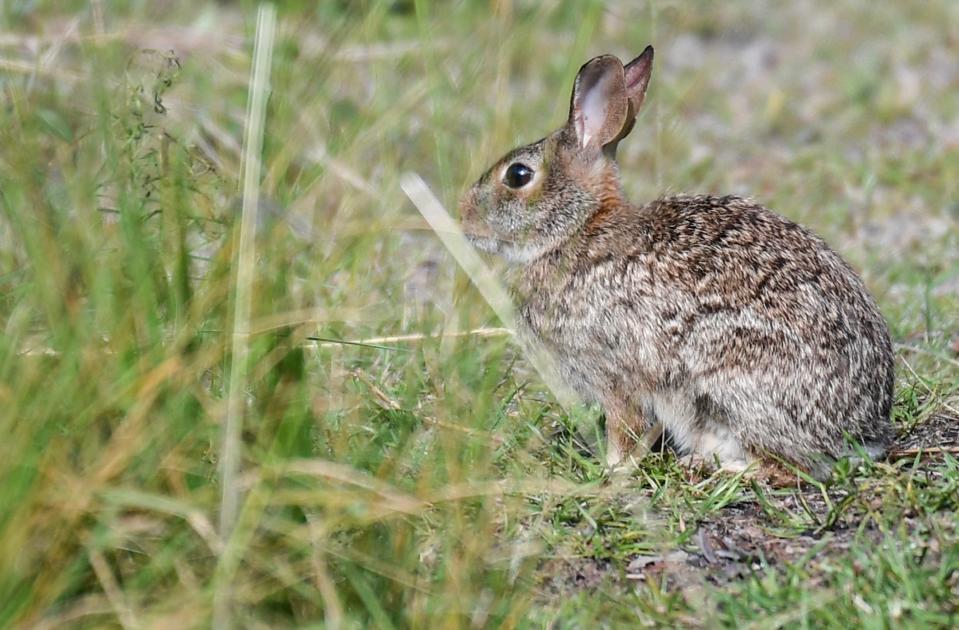Here's how you can protect young trees from rabbits and rodents during winter
Rabbits and rodents can cause injury to the thin bark and twigs of young trees.
When snow covers food sources normally sought during winter, these animals often move into home lawns in search of food. When winters have heavy snow fall, trees and shrubs are especially at risk. Winter feeding can permanently disfigure a tree or, if it is completely girdled, the tree will die.
Although any sapling or younger tree may be browsed, those with thin bark (such as willows and poplars) are most favored. Among conifers, pines are preferred. Fruit trees are prone to rabbit and vole damage. This is especially damaging because if the tree is eaten off below the graft, the fruiting variety is lost and the resulting growth may have little to no value for fruit production.
There are steps you can take to protect your trees from rabbits and rodents. Rabbit habitat is found along the forest edge, fence rows, brushy field borders, tall grass, and weeds. Limit these types of habitats near your property. Also keep brush piles at least 100 feet away. Too much mulch at the base of trees provides habitat for mice and voles to access and chew on the tree’s bark without being exposed to predators. Mulch should be no more than three to four inches deep and should not touch the bark.
In orchards, it is best to maintain bare ground at the base of fruit trees.

Protecting trees with mechanical barriers or repellents may also be helpful. A cylinder of 1/4-inch mesh hardware cloth, plastic drain pipe or commercially available plastic tree guards work well as mechanical barriers to animals. To work correctly, these items should extend two to three inches below the ground for protection against mice and voles and 18 to 24 inches above the anticipated snow line for protection against rabbits. Be sure to remove the mechanical barrier in the spring so it will not girdle the trunk during the growing season.
Where you have multiple trees or shrubs in a mass planting, it may be too time-consuming to wrap each individual trunk. Fencing these plantings with chicken wire may be a better protection option against rabbits. This temporary barrier should be 36 inches high with several inches buried below ground. You should inspect the fence frequently to ensure a rabbit has not gained access and is trapped inside.
Repellents make a tree undesirable by taste or smell. One advantage of repellents is their ease of application. Many commercially available repellents are sprayed or painted on the trunk. Some are sold that tie or clip to the tree. You can even make your own repellent by mixing 85% raw linseed oil, 5% household detergent, and 10% water. The disadvantage of repellents is that they are generally short-lived and requireseveral applications during the season, especially after heavy precipitation. They are also reported to have varying degrees of success.
Another option for rabbits is traps. Rabbits can be trapped in wire or box traps in winter when baited with carrots, bread, or apple slices.
If you live in a rural area, shooting (when in season and with a hunting license) can reduce rabbit populations and therefore the damage they cause. Considering that a pair of rabbits can produce up to six litters per year with two to three young per litter, this may be an important control method. Mice and voles can also be controlled with poisoned baits. Keep these baits out of contact with non-target wildlife or pets.
Several other animals such as groundhogs or skunks can cause some damage to your landscape but typically are not a significant problem. Trapping these animals and relocating them is likely your best method.
P. Andrew Rideout is the UK Extension Agent for Horticulture and can be reached at pandrewrideout@uky.edu.
This article originally appeared on Evansville Courier & Press: How do I protect trees from rabbits and rodents in winter?

